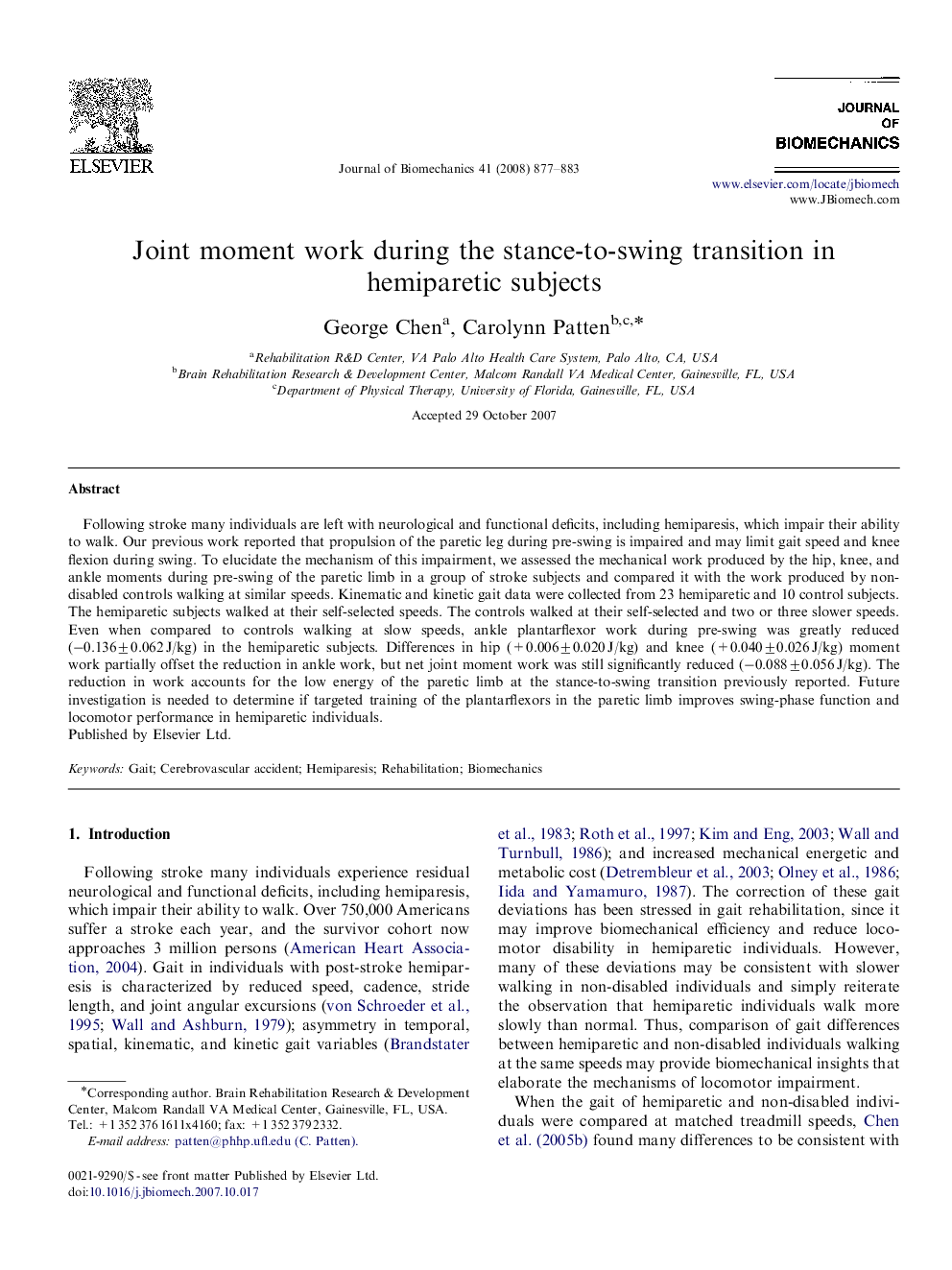| کد مقاله | کد نشریه | سال انتشار | مقاله انگلیسی | نسخه تمام متن |
|---|---|---|---|---|
| 873027 | 910295 | 2008 | 7 صفحه PDF | دانلود رایگان |

Following stroke many individuals are left with neurological and functional deficits, including hemiparesis, which impair their ability to walk. Our previous work reported that propulsion of the paretic leg during pre-swing is impaired and may limit gait speed and knee flexion during swing. To elucidate the mechanism of this impairment, we assessed the mechanical work produced by the hip, knee, and ankle moments during pre-swing of the paretic limb in a group of stroke subjects and compared it with the work produced by non-disabled controls walking at similar speeds. Kinematic and kinetic gait data were collected from 23 hemiparetic and 10 control subjects. The hemiparetic subjects walked at their self-selected speeds. The controls walked at their self-selected and two or three slower speeds. Even when compared to controls walking at slow speeds, ankle plantarflexor work during pre-swing was greatly reduced (−0.136±0.062 J/kg) in the hemiparetic subjects. Differences in hip (+0.006±0.020 J/kg) and knee (+0.040±0.026 J/kg) moment work partially offset the reduction in ankle work, but net joint moment work was still significantly reduced (−0.088±0.056 J/kg). The reduction in work accounts for the low energy of the paretic limb at the stance-to-swing transition previously reported. Future investigation is needed to determine if targeted training of the plantarflexors in the paretic limb improves swing-phase function and locomotor performance in hemiparetic individuals.
Journal: Journal of Biomechanics - Volume 41, Issue 4, 2008, Pages 877–883